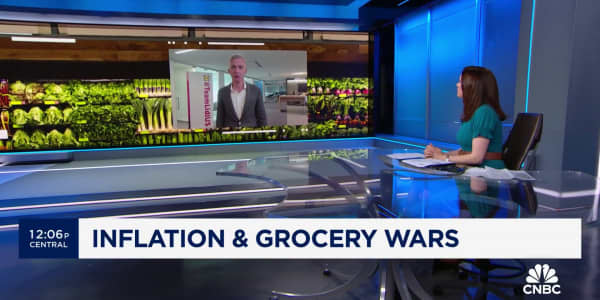The dividend play was supposed to be long gone by now, the victim of a rising rate environment and companies' desire to use cash to grow their businesses rather than just return it to investors.
Yes, well, about that: An expected spike in rates never happened in 2014, and with Wall Street anticipating a volatile year ahead, dividends are likely to remain in vogue.
When all was said and done, issuance was virtually unchanged on an annualized basis: $54.7 billion in 2014 vs. $54.8 billion the previous year, according to S&P Dow Jones Indices data. In fact, the end result may well have been an increase if not for a 5.6 percent quarterly drop in the year's final three months, spurred largely by the collapse in oil prices.
Looking ahead, strategists see another fertile year.
"2015 should easily set another record for cash dividend payments," Howard Silverblatt, senior index analyst at S&P Jones Indices, said in a statement accompanying the data.

Wall Street strategists are largely on board with that sentiment.
Read MoreFord shares rise after hiking dividend 20%
They see a year in which active managers, smarting from a miserable year when just 19 percent of them outperformed the Russell 1000 benchmark, both could benefit from the rising volatility environment and likely will change course away from their mistaken concentration in the small-cap names that badly missed the mark.
"If large caps outperform small again in 2015, as we expect, managers may need to revisit their persistent underweight in mega-cap stocks," Savita Subramanian, equity and quant strategist at Bank of America Merrill Lynch, said in an analysis for clients.
"We think ownership may also continue to matter, and thus some of the 'big old and ugly' stocks—cheap large caps which have been shunned by managers and are more likely to be shorts than longs by hedge funds, but many of which are high quality and offer attractive cash return and growth potential—could be the route to outperformance," she added.
Read MoreCramer's best money making strategy known to man
"Cash return" are the operative words. In the post-financial crisis market environment, companies have increase capital expenditures modestly while pushing dividends and share repurchases ever higher. Giving cash back to investors has been easy under the Federal Reserve's ultra-easy monetary policy.
Conventional wisdom often states that old-fashioned dividend payers suffer in a rising rate environment as investors trend toward higher-beta stocks that have more room to run.
Besides history showing that assumption to be largely false, and the likelihood that Fed rate hikes are likely to be slow at first, there's another reason for investors to gravitate toward dividends: volatility expectations.
Even with stocks reclaiming positive ground for the year in Thursday's trading, global economic weakness, the crush in oil prices and the end of the Fed's quantitative easing program have investors queasy.
Read MoreScared? Here are top correction protection plays
During a conference earlier in the week, Ed Keon, managing director and portfolio manager for Quantitative Management Associates, touted the value of plain-vanilla investing in such an environment.
In terms of "return from stocks, a lot more is going to come from dividends," Keon said at the gathering in New York presented by Prudential Financial.
"Be patient and see what the Fed is going to do with this," Quincy Krosby, Prudential's chief market strategist, added. "Have those dividends.... Our mantra is 'boring is good,' and that's what will underpin (client) portfolios."
S&P's Silverblatt points out that 2014 marked the fourth-straight year with dividend increases above 10 percent, with the trend likely to continue. Most of the big-cap companies listed in major stock indexes pay dividends, with 423 members of the and all 30 companies in the Dow Jones industrial average in the club.
Interestingly, he said he expects small-cap companies to act as a growth area. Just 52.7 percent of companies in the S&P 600 small-cap index pay dividends now, but that number has grown by 15 over the past six months.
Read MoreExpert: Large caps should outperform this cycle
If there's an area of caution, he said it could come from oil prices, as the sharp decline puts the squeeze on energy companies.
"Lower oil prices and oil price uncertainty, both of which hurt energy stocks over the past six months and devastated many small-cap energy issues, have spilled over to the dividend world," Silverblatt said. "This is not the financial dividend meltdown of 2008 and 2009, but energy does account for over 11 percent of dividends in the general market. If lower oil prices cut into earnings and cash flow, dividends could eventually be hurt."






